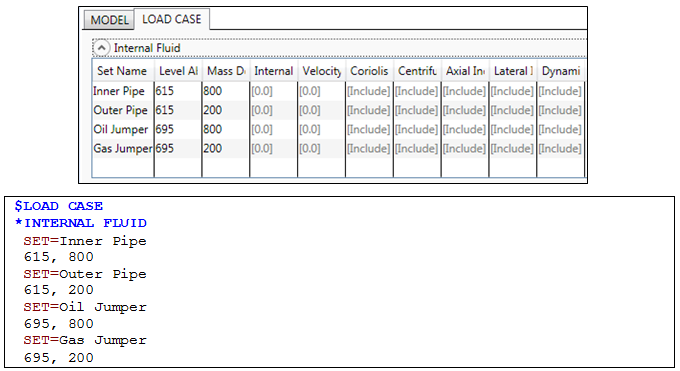Flexcom traditionally groups together four parameters required to provide the minimum environment specification, namely the analysis water depth, the density of seawater ρw, the gravitational constant g, and ν, the kinematic viscosity of seawater. The environmental parameters for this example are shown in the figure below. Refer to Environmental Parameters for further information on this feature.

Environmental Parameters
Refer to the *OCEAN keyword for further information on these data inputs.
Flexcom provides a comprehensive internal fluid modelling capability. Stationary internal fluids, uniform steady state internal fluid flow and multi-phase slug flow may all be modelled. A stationary internal fluid in Flexcom is characterised by its mass density, pressure above hydrostatic and the level above mudline to which it extends. The level above mudline input is used to determine whether elements are fully filled with fluid, partially filled or empty. In this example, both the inner pipe and the oil jumper are oil filled, while the annulus between the inner and outer pipes, and the gas jumper are gas filled, as shown in the figure below. Notice that internal fluid data is specified in a newly created $LOAD CASE section of the file. Refer to Internal Fluid for further information on this feature.

Internal Fluid
Refer to the *INTERNAL FLUID keyword for further information on these data inputs.